Delicious Diet D&D: Descent: Journeys in the Dark Second Edition
After years of mooching off of my friends, I’m in the process of starting a board game collection of my own. I’ve nailed down a lot of the no-brainers: Settlers of Catan, Dominion, Jenga, Battlestar Galactica. However, there was one game that I couldn’t commit to: the dungeon crawling Descent: Journeys in the Dark. I wanted to like the game’s pile of minis and fantasy trappings more than I actually did. For all of its promise, the game was too unwieldy to reliably create fun evenings with my friends.
When I saw that Fantasy Flight Games was developing Descent: Journeys in the Dark Second Edition, I was immediately intrigued. Intimations of streamlined game play and adventures that could be completed in a single hour instead of five had me salivating. Now I have my grubby mitts on the new edition and I’m happy to say that it looks like Fantasy Flight delivered.
Dungeon Crawling Basics
(Full disclosure: I have yet to play a game of Descent with my friends. I specifically mention “with my friends”, because I have played two complete missions by myself sitting on my living room floor. I am not ashamed.)
Descent: Journeys in the Dark Second Edition is a fantasy dungeon crawling board game for two to five players. Much like a traditional roleplaying game, one player takes on the role of the antagonistic “Overlord” and the other players each take control of a customized hero. (Or, in the case of a two player game, the non-Overlord player controls two heroes.) Each of the missions from the Quest Guide has its own unique game board created by combining puzzle-piece-esque rooms and corridors. The game board is populated by monsters, mission-specific victory conditions for the hero team and the Overlord are read out loud, and monster-killing loot-gathering play starts at full speed.
The components in the game are standard Fantasy Flight quality, and they clearly show the how Fantasy Flight has progressed since 2005. The minis seem to be more detailed than the first edition minis, the board pieces are much more colorful and varied, and the components themselves clearly communicate the rules. Opening up a Fantasy Flight Games product is much like opening up a nerdy treasure chest, and this game is no exception.
D&D-Lite
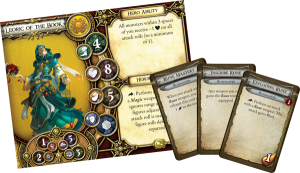 Descent lives and dies on the claim that it’s “D&D-lite”. It promises the excitement of a fantasy dungeon crawl without the complexity and time investment. Sadly, the original Descent was more trouble than it was worth. It took too long to set up, took too long to play, and the game’s mechanics often created a boring war of attrition that lasted for hours and hours. There was no scenario where I would have rather played the first Descent instead of actually playing in a D&D one-shot.
Descent lives and dies on the claim that it’s “D&D-lite”. It promises the excitement of a fantasy dungeon crawl without the complexity and time investment. Sadly, the original Descent was more trouble than it was worth. It took too long to set up, took too long to play, and the game’s mechanics often created a boring war of attrition that lasted for hours and hours. There was no scenario where I would have rather played the first Descent instead of actually playing in a D&D one-shot.
This second edition, however, has taken the dungeon crawling experience and mercilessly compressed it. All of the unnecessary parts have been squeezed out, leaving only the distilled essence of a rewarding dungeon crawl. Hero advancement is limited but rewarding: you can choose to turn your Berzerker into a whirlwind of blood or an indomitable brick wall. The missions themselves are streamlined: the whole game board is revealed from the start and (most of) the monsters are placed immediately. Combat is fast: what you roll is straight forward and rarely changes. Even the components put all the rules at the fingertips of the players and the Overlord.
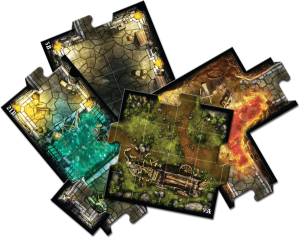 While the game play feels nearly frictionless, the true revolution in the second edition is within the mission design and the built-in campaign mode. The Quest Guide is a 43 page book separate from the rule book providing nineteen unique mission with two encounters each and a tutorial mission. Each campaign takes place over nine missions chosen from the available twenty with a set interlude and finale. This provides a cohesive (if simple) story for your players while their characters grow in strength.
While the game play feels nearly frictionless, the true revolution in the second edition is within the mission design and the built-in campaign mode. The Quest Guide is a 43 page book separate from the rule book providing nineteen unique mission with two encounters each and a tutorial mission. Each campaign takes place over nine missions chosen from the available twenty with a set interlude and finale. This provides a cohesive (if simple) story for your players while their characters grow in strength.
The mission design is focused on creating tense adventures of manageable length that move at break neck speed. The victory conditions are no longer “kill all of the monsters”; every game is a race between the Overlord and the heroes. There are beacons to light/destroy, villagers to save/kill, and dark rituals to prevent/complete. The players are stuck between a rock and a hard place from the very first turn: when they’re fighting for their lives and searching for loot, the Overlord is getting closer to victory. This structure prevents the game from becoming a war of attrition and keeps the tension high.
Most importantly, for me: the game itself takes about fifteen minutes to set up, and my play tests took about an hour to an hour and a half for complete both encounters in a mission. This game looks to successfully occupy the space that the first didn’t: an easy to play board game that hits all the high notes of a table-top RPG dungeon crawl.
Forever Alone
Now that Seattle doesn’t exist on the surface of the sun (seriously, it was 95 degrees last week, wtf Pacific Northwest?) I need to get my friends together to play this game. I have yet to commit to whether or not this game is fun, since I haven’t seen it in full swing yet, but it seems to be designed to deliver exactly the experience that it promises. I’m predicting an actual play session post coming soon.
Save for the header, pictures ©2012 Fantasy Flight Games.

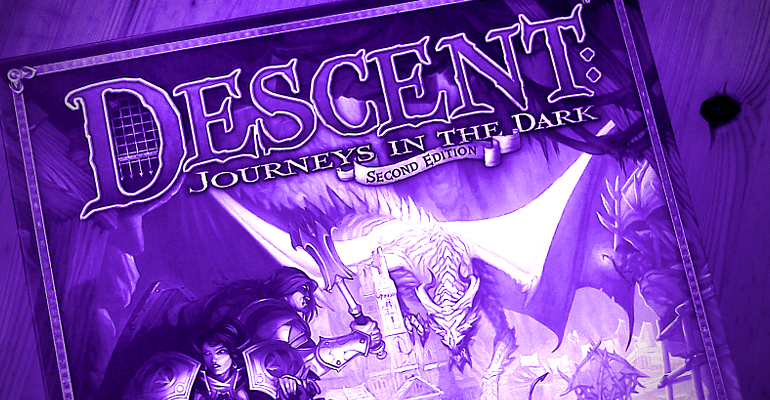
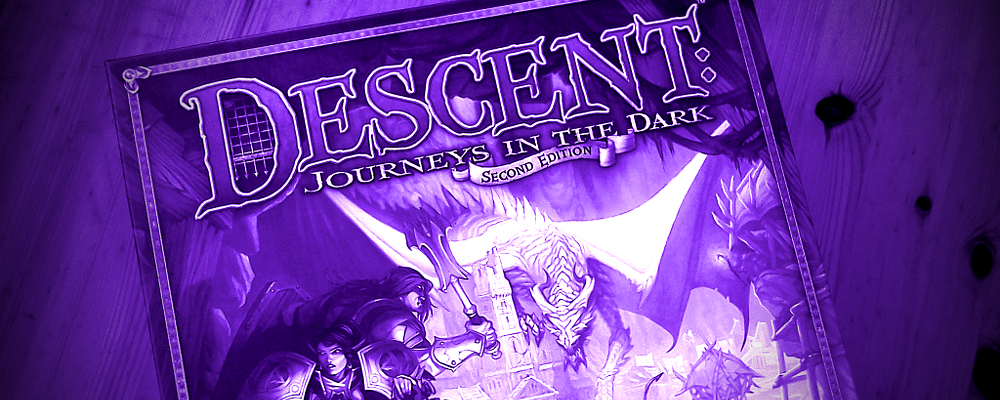
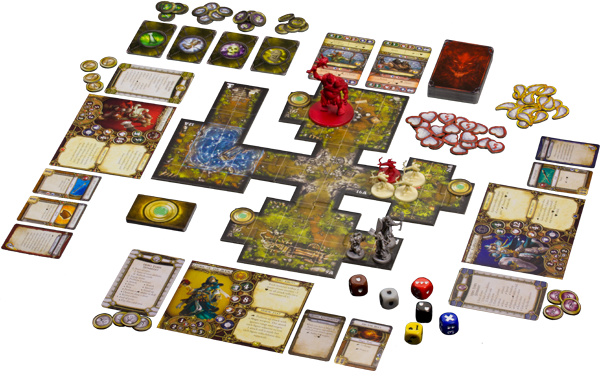




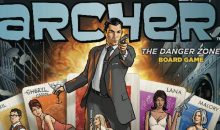
In the end, we went back to real roleplaying games after trying a few games of Descent 2e. Being able to try any tactic or weird idea is so fun. Our current game is D&D 5e.
Also, for us, both games are similarly difficult to succeed in, but in Descent, that would result in us getting knocked down, trying to get up, getting knocked down again, and so on.
Where as in D&D we would typically die, flee or win.